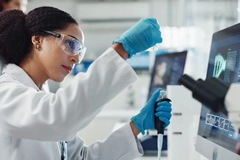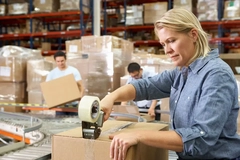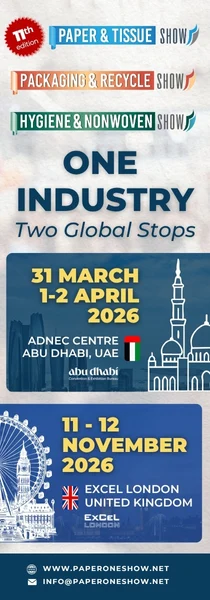Australian researchers develop seafood-based biofoam amid national EPS phase-out
The Australian Bioplastics Innovation Hub (BIH) has partnered with the Perth-based biotechnology company Cass Materials to replace expanded polystyrene (EPS) seafood boxes with a fully biodegradable alternative made from wheat straw.
Gary Cass, CEO at Cass Materials, tells Packaging Insights: “The aim of Cass Materials will be to produce biofoam seafood boxes at scale that have the same performance in light weight, strength, water repellency, and insulation qualities that can be a viable alternative to EPS packing.”
“Consumers are becoming more aware of the damage that fossil-based plastics are doing to our environment. With this awareness, I believe that consumers are willing to pay a little more for sustainable alternatives.”
“It is important that we, as an industry, are able not only to make more sustainable alternatives but also make products that are as economically viable as possible to encourage industry and consumers to make the change.”
The scientists note that the traditional polystyrene packaging takes more than 500 years to decompose in landfill and releases microplastics as it breaks down. The biofoam boxes are developed as an alternative, and can completely degrade within months, improving the organic matter content of soils, according to the research.
 The boxes aim to meet the industry demand for convenient and environmentally friendly packaging (Image credit: Cass Materials).Last month, Western Australia introduced regulations banning products with molded packaging made from expanded plastics, such as EPS, or packaging cut to shape. These can no longer be sold or supplied by businesses, manufacturers, retailers, or distributors. The ban aligns with Australia’s nationwide EPS phase-out roadmap.
The boxes aim to meet the industry demand for convenient and environmentally friendly packaging (Image credit: Cass Materials).Last month, Western Australia introduced regulations banning products with molded packaging made from expanded plastics, such as EPS, or packaging cut to shape. These can no longer be sold or supplied by businesses, manufacturers, retailers, or distributors. The ban aligns with Australia’s nationwide EPS phase-out roadmap.
Solution to real-world problems
The Western Australia seafood industry is known as one of the state’s most lucrative industries, leading to mounting packaging waste. A recent review from Murdoch University, Australia, found that agricultural soils now hold approximately 23 times more microplastics than oceans.
“We, as an industry, cannot continue polluting the world with fossil-based plastics for generations to come. The biofoam boxes fit well into the circular economy,” says Cass.
“Cass Materials’ biofoam packaging and boxes will add value to what might be seen as a waste stream of the agriculture industry. Especially here in Western Australia, with no till farming practices, when 10 million metric tons of wheat straw is burnt per year.”
The biofoam laboratory prototypes reached Technology Readiness Level 4. The box is said to be lightweight, home-compostable, and hydrophobic, meaning that it can retain ice and water. Cass shares that the packaging’s recyclability allows for a continuous box creation.
“The packaging industry will benefit by reducing its reliance on fossil-based plastics, especially EPS, which is being phased out — if not banned — around the world. Both the agriculture and packaging industries will join the global bioeconomy and help to combat climate change and its impacts, along with the conservation and sustainability of our ocean and terrestrial ecosystems,” he adds.
BIH is a joint venture between Murdoch University and Australia’s Commonwealth Scientific and Industrial Research Organisation. Researchers at BIH are developing a fully waterproof barrier for the biofoam boxes to meet the final market requirements.
Professor Daniel Murphy, BIH director, microbiologist, and biochemist at Murdoch University, comments: “We want to improve single-use items in the food industry by having biodegradable and compostable materials that replace things like synthetic plastics.”
“By developing items that can replace synthetic plastic in food transportation, storage, and packaging, we can help to both lower environmental impacts and address incoming plastic bans.”











